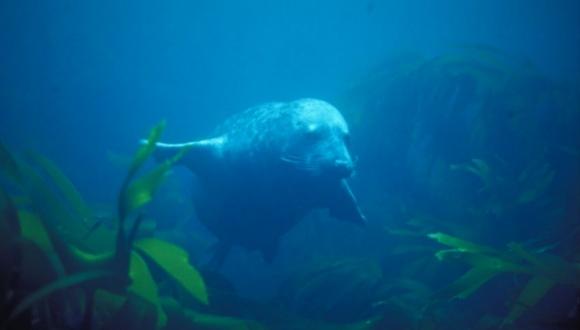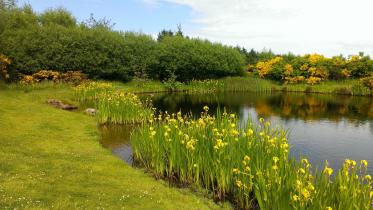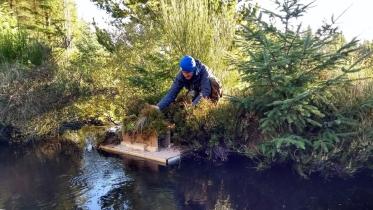Guidance Note 11: Guidance to support Offshore Wind Applications: Marine Ornithology - Recommendations for Seabird Population Viability Analysis (PVA)
Published: 2023
Version 1: January 2023
This document is part of a series of guidance notes available on Advice on marine renewables development - marine ornithology.
This guidance note sets out our advice on Population Viability Analysis (PVA). Please see Guidance Note 1 - Guidance to support Offshore Wind Applications: Marine Ornithology which provides the context within which this guidance note is provided. Check the log of updates in guidance note 1 to ensure the most current version is being followed. We expect each and every developer to adhere to this guidance, including the recommended parameters to provide consistent and comparable results for all Scottish projects to be assessed as an individual project and cumulatively. This guidance note should be used in conjunction with the Cumulative Effects Framework (CEF).
Please note this guidance was written prior to the development of a NatureScot position on how to account for the ongoing Highly Pathogenic Avian Influenza (HPAI) mortality event within an impact assessment. We are currently developing this advice and will provide updates and guidance when they are available. In the interim please contact [email protected] should you have any specific queries.
1. Introduction
Within both Environmental Impact Assessments and Habitat Regulations Appraisals (HRA) the predicted collision and/or displacement and barrier effects of offshore wind developments need to be considered against the relevant marine bird populations. The primary method used for assessing the population consequences in these assessments is a population viability analysis (PVA).
This guidance note is currently ONLY for use on seabird populations and breeding red-throated diver marine SPA populations. It does not apply to wintering gull marine SPA populations or Manx shearwater in the Outer Firth of Forth and St Andrews Bay Complex SPA. Guidance for these two seabird exceptions and for non-breeding red-throated diver and other inshore winter waterfowl will be provided as an updated version to this note in due course.
2. Recommendations for considering population level consequences for marine birds using PVA
2.1 Threshold for undertaking PVA
The impacts of collision and distributional responses, such as displacement, will need to be considered in the context of relevant SPA breeding colonies particularly where the assessed effects exceed a change to the adult annual survival rate of 0.02 percentage point change. For example, if a survival rate was estimated at 80% and this decreased to 79.98% when including the impacts of apportioned collision or distributional responses, a PVA should be undertaken. Where apportioned impacts are large and / or the SPA populations are small, it is likely that population models will be required to establish whether or not there could be long-term impacts on population viability.
We consider the following contextual elements should be taken into account:
- Long term colony trend
- Short-term colony trend
- Species life history
- Proportional importance of species in Scotland and UK
- Climate change vulnerability
The following resources may help to inform this:
- NatureScot: Scottish Network Assessment – All Species Assessments
- Marine Scotland: Impact of climate change on seabird species off the east coast of Scotland and potential implications for environmental assessments: study
MaRPAMM: Predicting seabird distributions in response to climate change using habitat modelling
We advise that modelling is undertaken for the project specific impact of the development being assessed. We also expect modelling for cumulative effects with other wind farm developments to be undertaken which should be agreed with NatureScot. The Cumulative Effects Framework (CEF) should be used for this, when published.
2.2 Type of model
The Natural England (NE) PVA tool should be used to undertake Population Viability Analyses. This uses a Leslie Matrix Model, which is an age-structured model, populated by life-history parameters to estimate population size over a set time period.
The NE PVA Tool and associated documentation is available on GitHub. This should be checked prior to use to ensure the most up to date version is being used. We request that the version used (in the form PVA-tool_Nov2022) is noted within the assessment.
3. Recommendations for undertaking population modelling
The impacts predicted by the collision and displacement modelling will be estimated for both the breeding and non-breeding season. These values should be apportioned to the colonies using the methods set out in guidance note 9. The monthly (or seasonal) impacts should be summed to create an overall annual effect value.
3.1 Time periods
We request that the modelling of impacts is undertaken over two or three time periods:
- 25 years (and the intended lease period if different)
- 50 years
This is due to increased uncertainty in interpreting outputs from model predictions further than 25 years ahead. No recovery period should be applied to either model run. Impacts should be applied to all ages (including juveniles) in agreement with the age apportioning approach, and sabbatical rates of adult birds should be taken into account.
We acknowledge that it is more difficult to make predictions over a longer time-frame as uncertainty in the model outputs increases with the length of model run. For SPA seabird interests this may make it harder to conclude no long-term impacts on population viability and no adverse effect on site integrity.
3.2 Determining Starting Populations
The most up to date population data (i.e. most will be available within the SMP database) should be used to determine the baseline populations. This should be undertaken at the designated site level, e.g. at the SPA level for HRA. If new population data (counts and/or productivity estimates) are being collected by the developer this should be discussed and agreed with NatureScot prior to data collection (see Guidance Note 5).
3.3 Life History Parameters
We recommend the use of Horswill and Robinson (2015) for species demographic data for use within population modelling. The input values used should be reported, and justification should be provided if any different values occur, for example, if site specific data are available.
Where there is a discrepancy in the population trends between the model and actual population data, we request that NatureScot are consulted. Developers should not alter the values applied in the PVA unless there is a biological justification for this. Similarly, where there is uncertainty around demographic rates, or a species does not have all input data available, this will be considered during the scoping process.
4. PVA metrics to be presented
We advise the two ratio metrics that compare impacted and un-impacted populations should be applied in both EIA and HRA. The two metrics that should be used are generally termed ‘Counterfactual (ratio) of final population size’ (CPS) and ‘Counterfactual (ratio) of population growth-rate’ (CPC). There have been a number of key references that have explored the use of these (e.g. Jital et al. 2017, Cook and Robinson 2016 and Green 2014).
Ratio metrics provide the most robust measures of population level impacts. However, there is no standard threshold value with respect to what might be considered an "acceptable" level of impact. This will be specific to the population being considered and be informed by biological, statutory, policy and other considerations (such as population vulnerability to climate change). Ultimately, with respect to HRA, the level of impact must be compatible with the site specific Conservation Objectives to enable a conclusion of no adverse impact on site integrity.
In addition to the ratio metrics, other metrics, e.g. predicted final population size, can be supplied for context, and output graphs of PVA runs should be supplied where possible.
Counterfactual thresholds should not be applied. For example, a CPS of 95 or CPC of 90 or above might be considered to be a small enough effect size that the development would not lead to an adverse effect on site integrity. However, any counterfactual values that are used must be compatible with the Conservation Management Advice, as this provides the management requirements for each species and site reference populations which define what site integrity means for each SPA.






